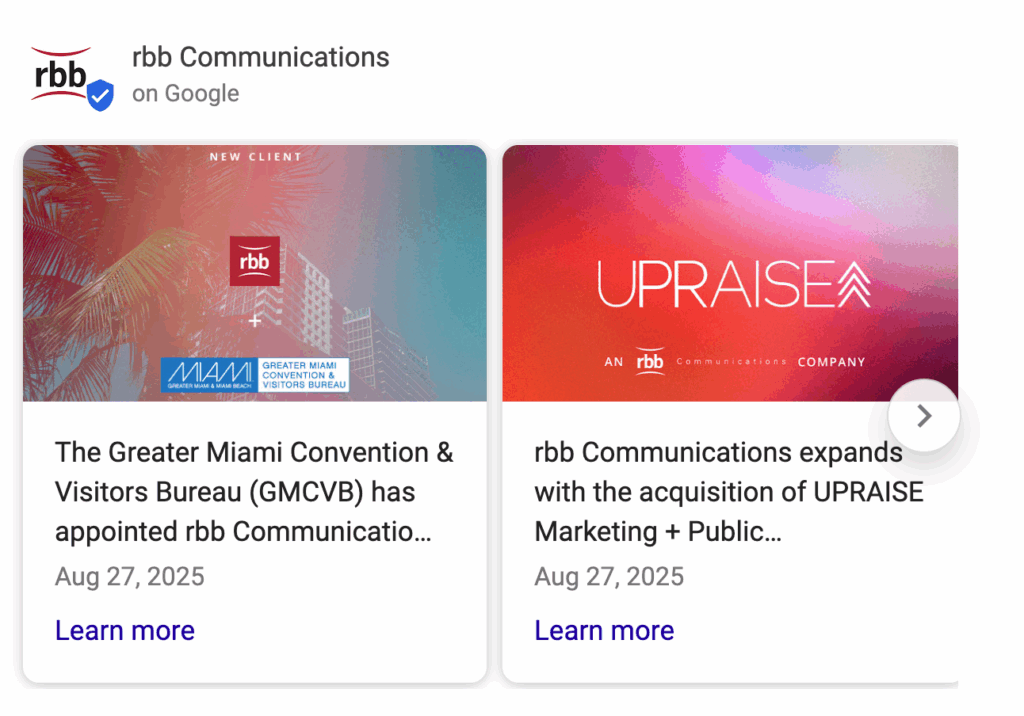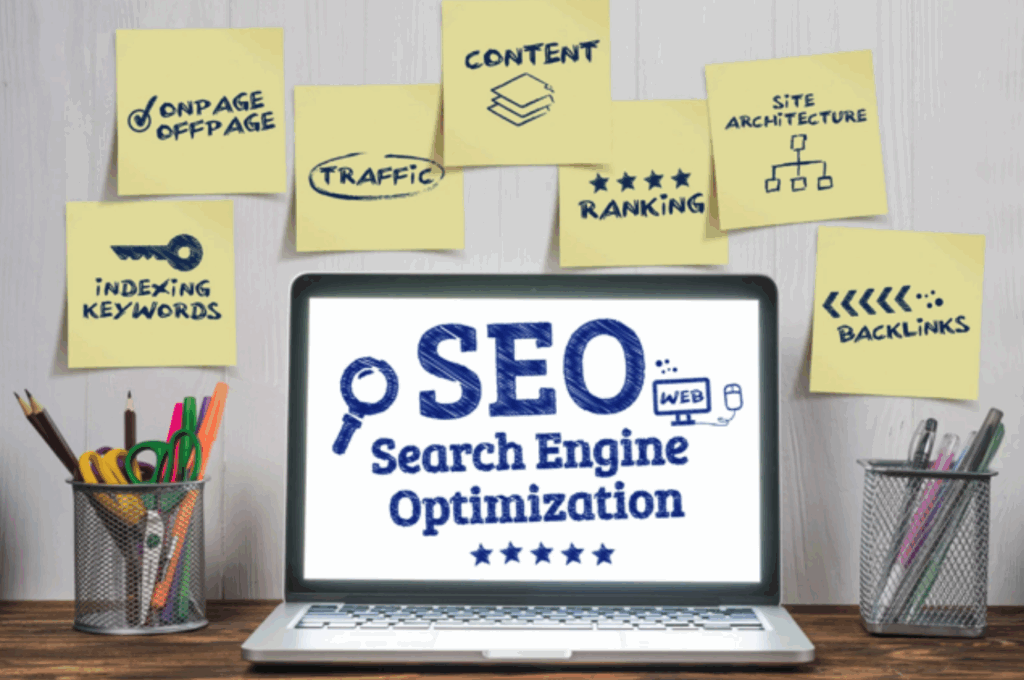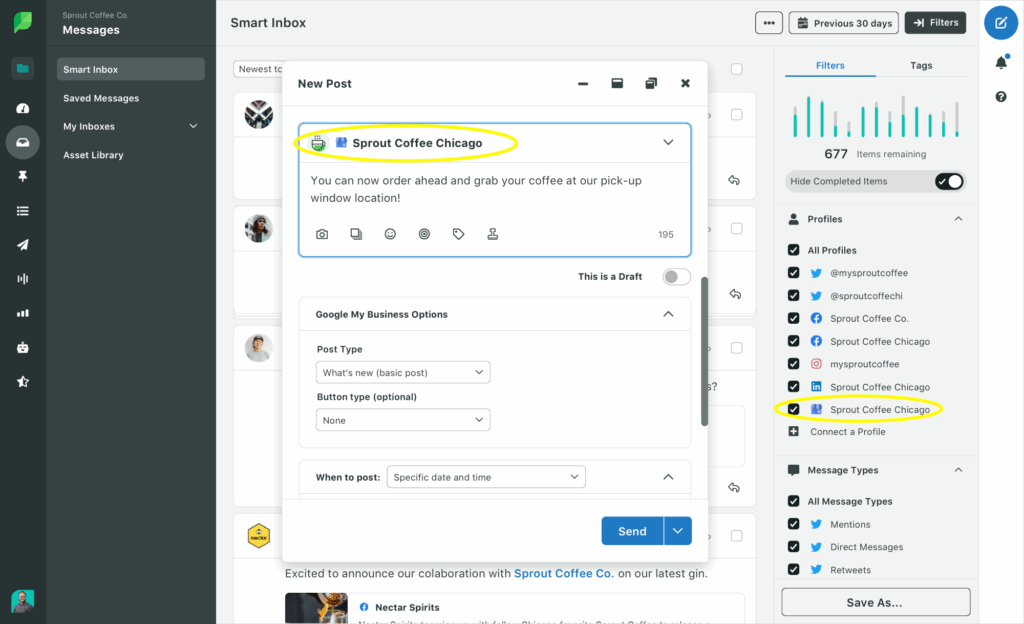If your team is putting significant energy into website updates, email, and social media, but overlooking your Google Business Profile, you’re not alone. Despite being one of the most visible brand touchpoints on the internet, this free tool is often treated as a one-and-done setup instead of what it really is: a dynamic, search-facing content channel with real influence on both SEO and AI-powered discovery. After all, it’s Google’s own real-time publishing channel, built into powers nearly 90% of all searches, and it directly feeds into how Google understands and ranks your business. In short, most brands, especially those that rely on local visibility, timely promotions, or real-world customer interaction, are missing an opportunity.

Why Google Business Profile Is Your Missing Content Channel
Originally designed as a way to verify your business name, hours, and location, Google Business Profile (GBP), formerly Google My Business, has evolved into much more. It’s now a live interface between your brand and search users, appearing front and center on Google Search and Google Maps for countless local and branded queries.
The catch? Most businesses stop at filling out the basics such as location, hours, and services offered. They fail to utilize the posting capabilities that enable brands to publish timely updates, events, offers, and service information directly into search results.
This underuse isn’t due to a lack of value; it’s a workflow gap. GBP doesn’t fall cleanly into the traditional buckets of social media, SEO, or content marketing, so it’s often left off the content calendar entirely. But it should be considered essential.
How Google Business Profile Boosts Your SEO Performance
From an SEO perspective, publishing to your Google Business Profile helps maintain freshness and relevance in the eyes of Google’s local ranking algorithm. Frequent updates signal that your business is active, engaged, and trustworthy; three qualities Google weighs heavily in determining which businesses to show in local map packs and branded search panels.

Beyond activity signals, GBP content can help reinforce essential keywords tied to your services or location. Descriptions in posts, photos, and product features all contribute to your overall search footprint. When optimized thoughtfully, GBP becomes a content extension of your website, one that shows up at the exact moment someone is looking for what you offer.
Preparing for AI Search: Why GEO Matters Now
SEO isn’t the only acronym that matters anymore. As generative AI continues to influence how people search and consume information, Generative Engine Optimization (GEO) is emerging as a critical consideration.
Platforms like Google’s Search Generative Experience (SGE), ChatGPT, Perplexity, and others are designed to surface fast, credible, summarized answers. That means your brand’s visibility increasingly depends on how well your content is structured, verifiable, and available through trusted sources.
Google Business Profile checks all of those boxes.
As a verified, structured, and frequently crawled asset, GBP content is exactly the type of material that AI engines prefer to reference, especially when users are asking questions related to location, services, or product availability. Publishing clear, accurate, and consistent content here gives your business a better chance of being cited in generative answers or used to inform them behind the scenes.
What Content Should You Post on Google Business Profile?
Content on GBP doesn’t have to be complicated; it just needs to be consistent. Weekly or biweekly posts that align with your business priorities are a smart place to start. Highlight seasonal services, promote current offers, share photos of new inventory or team moments, and post quick updates about what’s new. Keep it timely, keep it relevant and use strong calls to action to drive engagement.
Because posts expire, keeping content fresh isn’t just a best practice; it’s necessary to maintain a polished, up-to-date appearance in search results.
Streamlining Your GBP Content Workflow

Publishing to your Google Business Profile is also remarkably easy, especially now that many third-party social media management tools support it. Platforms that we use at rbb Communications, like Sprout Social, Sprinklr, and others, offer scheduling and publishing features for GBP, making it simple to incorporate into your existing content workflows. That means you don’t need to log in to Google separately or manage posts manually. Whether you’re repurposing a social media update or announcing a local event, posting to GBP can take less than a minute, and the potential visibility makes it well worth the effort.
Technical Differences Between Social Media and GBP Content
While social media content and Google Business Profile (GBP) posts may seem similar, they do differ slightly in their technical requirements. Social media platforms like Instagram and Facebook support a wide range of image formats and aspect ratios (commonly 1:1 square or 4:5 vertical) and allow generous character counts, often encouraging hashtags, emojis, and links. In contrast, GBP posts prioritize clarity and brevity: images must be horizontal (ideally 1200×900 pixels), and posts are limited to 1,500 characters, with no support for hashtags or embedded links in the copy; however, a call-to-action button is allowed on posts. Additionally, GBP content must adhere to stricter formatting guidelines, as it appears directly in Google Search and Maps and is subject to content policy enforcement more similar to Google Ads than typical social platforms.
The Bottom Line
Google Business Profile is no longer just a digital phone book entry. It’s an owned content channel that feeds both traditional search engines and emerging generative AI tools.
If your brand is investing in content, it’s time to include GBP in the strategy. Publishing here can strengthen your SEO, expand your presence in AI-generated answers, and make your business more discoverable exactly where and when it matters most.
Most businesses won’t do it. That’s your competitive edge.
Let’s talk about your opportunities to reach more people.
